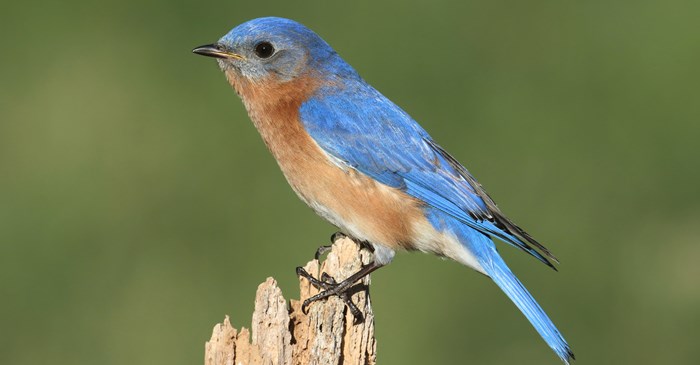One bluebird species or another can be spotted across the continental U.S., from mountainsides to the plains, from open forests to parks. From coast to coast, these are the three main species to watch for:
- The Eastern Bluebird is the most common, and can be found from the Midwest’s high plains to the East Coast. They have bright blue feathers with a full red breast.
- Western Bluebirds have a smokier blue plumage, with just a bit of red on their breast. They can be found in pockets of territory, from the Southwest, up along the California coast and parts of the Pacific Northwest.
- The sky-blue Mountain Bluebirds dwell in and west of the Rocky Mountains, all the way to the coast.
In any case, bluebirds are cavity nesters, but unlike other species that like to build a nest in the hole of a tree, bluebirds don’t excavate their own opening. They’ll take on an abandoned woodpecker cavity or settle in an opening of a dead tree.
The good news for backyard birders is that bluebirds easily take to nesting boxes. The Cornell Lab of Ornithology has an excellent online guide to help you find the right location as well as the dimensions of the box and opening.
During nesting season, male bluebirds will scout out a good nesting site, and vie for female approval by placing some nesting material into the hole, perching above it and waving his wings. When it comes to Mountain Bluebird romance, it’s all about location, location, location; these females pay scant attention to the male’s size, color or song.
When it's time to build the nest and incubate the eggs, female bluebirds do all the work. Bluebirds often raise more than one brood a year, and will even reunite in later seasons.
Their diet is comprised mostly of insects, but bluebirds will also feast on berries and finely cut nuts. To draw the bluebird into your yard, set up that nesting box and fill your feeder with Lyric Fine Tunes to help them supplement their food source.
